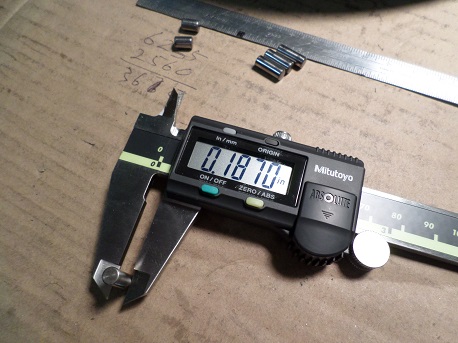Harley 45 Engine Assembly
Text and Pictures by Mark Trotta
Cam timing is critical to a good running engine. The four valves, crankcase breather, timer, oil pump and generator all depend on proper cam timing to work correctly.
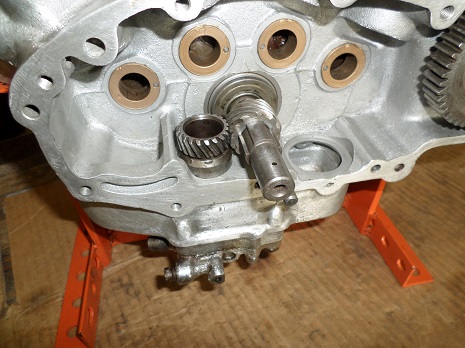
After the Harley 45 bottom end is together and the scavenger oil pump is in place, the idler and cam gears are next to be installed.
Harley 45 Cams
There are four different cams. They will be stamped 'W' 'G' or 'GE' with numbers after them (1 2 3 4).
The "G" cams for Servi-cars (models G and GE) are marked 1G, 2G, 3G and 4G. The early 2G cam, part# 25502-37, was used through 1958. The late 2G cam, part# 25502-59, was used 1959 through 1973.
NOTE: The later 2G cam has a .575" bearing surface at the cover end.
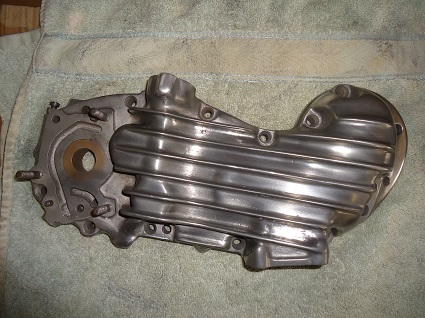
Harley 45 Cam Cover
There is an early style cam cover (up to 1958) and a late style cover (1959 and up) for the Harley 45 engine. When the cam cover changed, so did the #2 (rear intake) cam. You can use the early #2 cam with any early cam cover, or you can use the late #2 cam with any late cam cover.
Before installing cams in the chest:
Lay the cam cover flat so the inside faces up. With a little motor oil on the cam teeth, stand the cams upright in the bushings.
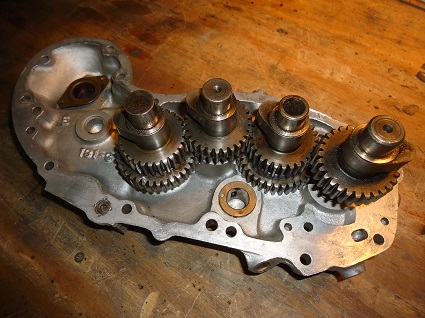
Turn slowly. Listen and feel for any binding. If there is any, stop and find out why.
Install Cam Gears
Turn flywheel assembly slowly until you see the flywheel mark in the timing window.
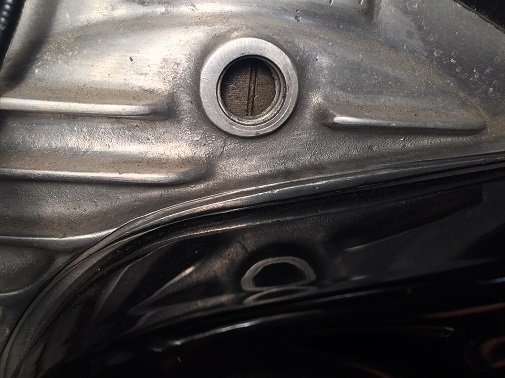
Next, slide on the pinion gear. It can only go on one way.
Align all cam timing marks off the pinion gear mark. The cams are aligned to each other by lining up the notches on the outer face.
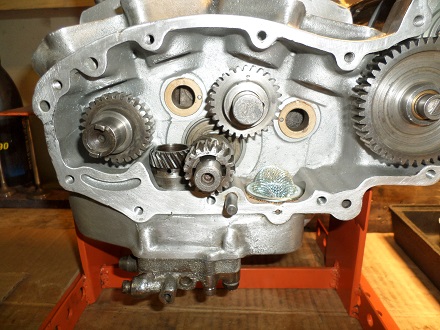
Starting at the flywheel mark, install the cams in this order: rear exhaust, front intake, rear intake, and front exhaust.
The notches on the cams won't always line up exactly--that's how they are.
********************
During engine assembly, you will be installing and removing the cam cover several times. The cover should go on with little or no effort. Only if necessary, tap the cover on carefully with a soft mallet.
********************
Check For Cam Gear Binding
Temporarily install the cam cover with a gasket. The gasket is part of the end play you'll be checking later on.
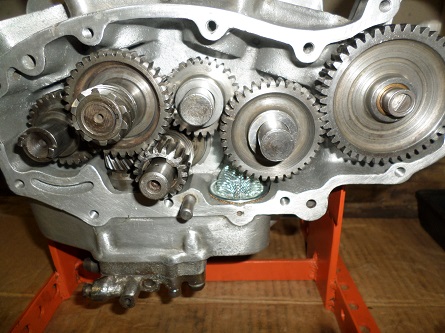
Once the cam cover is on, install three or four bolts only. With the motor standing upright, slowly rotate the flywheel assembly.
If all is well, remove the cam cover, install the idler gear and generator, and check again for any binding.
By doing this in two steps, you can isolate what is causing any potential binding.
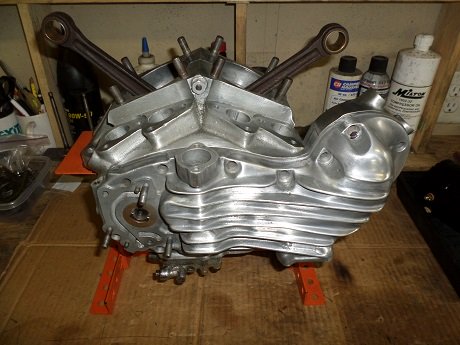
After they've all rotated together a few times, it's a good idea to re-check the cam alignment marks.
********************
Check Cam End Play
If no binding is felt, cam end clearance can now be checked. With the cam cover on and tightened down, but with tappets not yet installed, slide a feeler gauge down into the open tappet-block hole.
I prefer to check cam end play without shims first, write down the measurements, then add shims as needed. Acceptable cam end play is .001" to .005".
Most Harley 45 engines left the factory with one steel shim washer behind each cam, but some cams may require none, while others may require two. Hopefully you took notice of this during the disassembly process. The shims are installed behind the cams.
When you're ready to button up the gear case, lay the engine on it's left side, take off the cover once more, and pour about a 1/4 pint of engine oil all over the cams for lubrication. Install the cam cover with gasket using a non-hardening sealant. Install and tighten all cam cover bolts.
Tip: If the motor won't be started for awhile, liberally coat the cams with an assembly lube.

********************
Install Generator
To prevent too much oil from getting on the generator ball bearings, Harley generators have an oil deflector, sometimes called a slinger. Two different kinds of oil slingers are found on the 45 flathead; one works with the two-brush generator and the other on the three-brush generator.

On a three-brush generator, the oil deflector requires a spring between it and the bearing to hold it up against the gear. There is a spring-loaded breather on the inside of the Harley 45 cam cover that rides on the end of the gear.
The oil deflector used on later two-brush generators has a built-in collar. The gear is drawn onto the shaft with a nut until it pinches the oil deflector tight against the inner race of the ball bearing. This sets the location of the gear and locks the armature in place. The oil deflector on two-brush generators also sets the location of the gear.
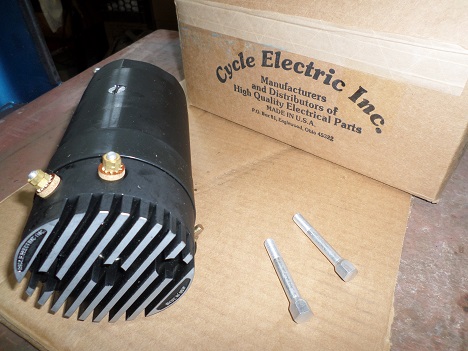
Three-Brush to Two-Brush Generator
When converting from a three-brush generator, you will need to enlarge the mounting holes on the early cam cover from 1/4" to 5/16". This is easily done with a 5/16" drill bit. You will also need a pair of 5/16" mounting bolts, and the correct generator gear and oil deflector.
If you don't want to drill out your cover, you can install a pair of Heli-coil inserts into the case threads. This allows you to re-use the smaller 1/4" bolts.
Read: Harley Generator Repair or Replace
********************
Oil Feed Pump Installation
After the cam cover and generator are back on, the oil feed pump can be mounted. First install the (new) gasket, slide the oil feed pump onto the three studs, then hand-tighten the three nuts and washers.
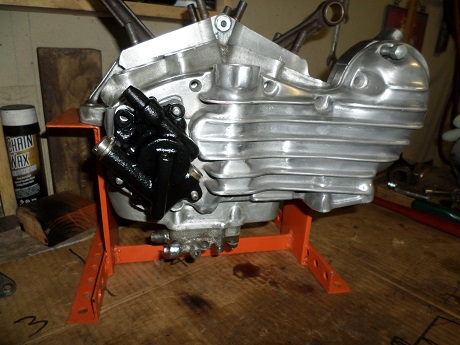
While turning the engine over slowly by hand, press lightly on the pump until you feel the drive cogs mesh and drop into place. Tighten the three nuts and washers.
Next, the tappet blocks and tappets can be installed.
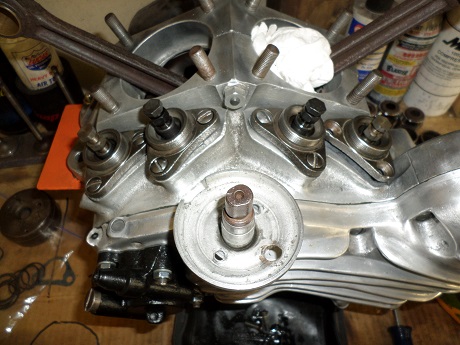
The ignition timer can be installed now or later.
********************
Related Articles:
Harley 45 Engine Teardown and Inspection
Repair Stripped Threads In Aluminum
Harley 45 Timer And Ignition
Harley 45 Bottom End Assembly
Harley 45 Scavenger Oil Pump Repair
Harley 45 Cylinder Assembly
Best Engine Assembly Lube
